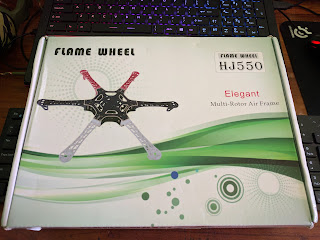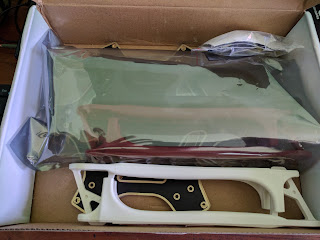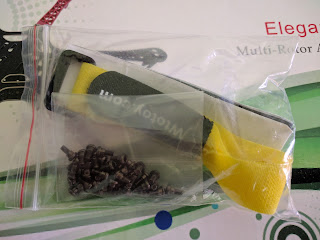The F550 Frame, which I ordered from eBay, finally arrived. The shipment did get a bit delayed than I thought, but considering it was a holiday season I'm OK with that.
This F500 (or HJ550 as labeled on the box) is also not the genuine DJI branded one. It's a clone similar to the F450 frame I reviewed
in my last post.
 |
| The F550 Frame in the box |
It comes with the 2 PCB plates (with the integrated power distribution lines), 6 arms (in 3 colors), and the nuts and bits to put it together.
 |
| 2 Plates, 6 Arms, and the Nuts |
The plates seems to be of good quality (I haven't done a connectivity test yet). The connection points and the solder pads looks good.
 |
| The F550 Top and Bottom Plates |
Once you have both the F550 and F450, you see how much larger the F550 plates are, compared to the F450.
 |
| The F550 Plates vs. the F450 Plates |
The arms on the other hand, appears to be almost identical. However, We'll have to check the weight of them to verify that.
 |
| The F550 arm (left) vs. the F450 arm (right) |
And yes, the box did came with all the nuts and bits needed to put the frame together.
 |
| The nuts and bits for the F550 |
With the Naza-M Light and the frame at hand, now I need to decide which Motors and ESCs to get.
(And I need to decide between the FlySky FS-i6S and the RadioLink AT9S also)






Comments
Post a Comment